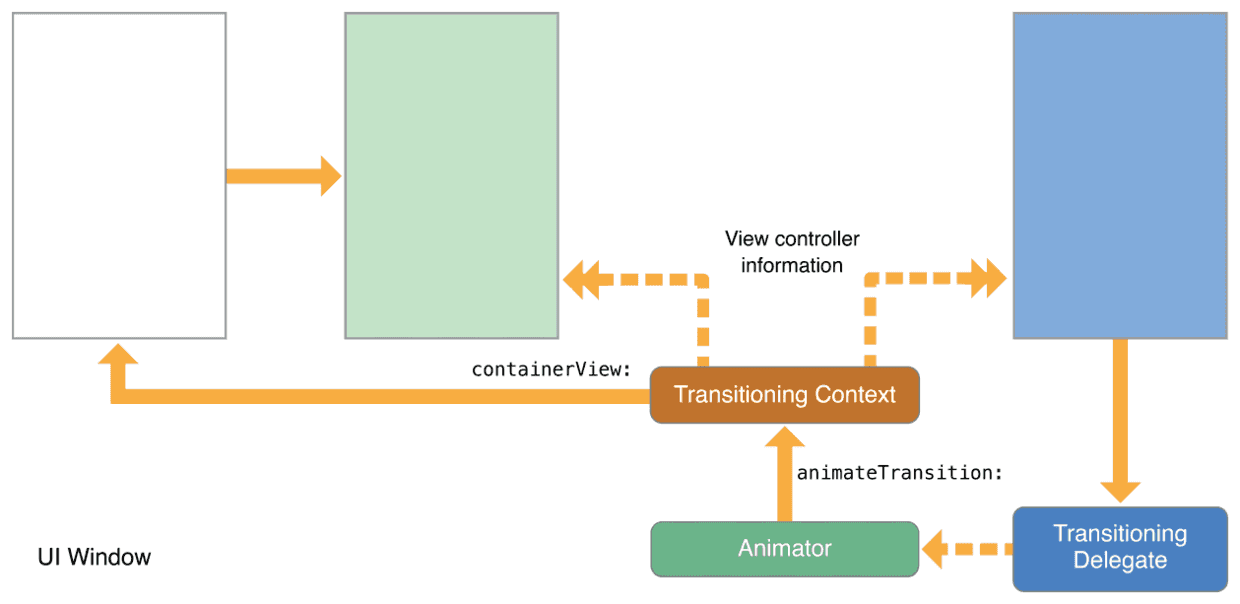IOS開發(49)之關於 self與內存相關的用法總結
今天新同事問了一些關於什麼時候用全局變量,什麼時候用self.賦值的問題,所以筆者在此說明一下。
何時使用self.在網上搜索或者論壇裡的回復大多都是簡簡單單的說這與objc的存取方法有關,如何與存取方式有關究竟他們之間的是什麼樣的關系就很少有同學回答了。下面以代碼來說明問題:
創建一個Student類,繼承NSObject類,代碼:
01 #import <Foundation/Foundation.h>
02
03 @ interface Student : NSObject{
04
05 NSString *idd;
06 NSString *name;
07 }
08 @property (nonatomic, retain) NSString *idd;
09 @property (nonatomic, retain) NSString *name;
10
11 @end
.m文件 代碼:
01 #import "Student.h"
02
03 @implementation Student
04 @synthesize idd,name;
05
06 - (void)dealloc
07 {
08 [idd release];
09 [name release];
10 [super dealloc];
11 }
12
13
14 @end
使用@propety @synthesize實現Student的成員屬性的set get方法。通常我們在其他類裡訪問Student的成員屬性的做法:
獲取student的名字通過student.name,給名字賦值[student setName:@“jordy”]; 其中student是Student類對象,如果在Student類內部訪問其成員屬性使用[self setName:@”jordy”], 訪問使用self.name;
注意:上述的代碼,由於wordpress的原因,代碼中的字符會自動保存為中文格式。你在使用時記得改為英文格式。
在Student.h和Student.m文件,是我們習慣性的寫法,但似乎還是不能解釋什麼加self和不加self的區別,請看下面代碼,是另一種習慣性的寫法,還以Student類為例:
.h文件 代碼:
01 #import <Foundation/Foundation.h>
02
03 @ interface Student : NSObject{
04
05 NSString *_idd;
06 NSString *_name;
07 }
08 @property (nonatomic, retain) NSString *idd;
09 @property (nonatomic, retain) NSString *name;
10
11 @end
.m文件 代碼:
01 #import "Student.h"
02
03 @implementation Student
04 @synthesize idd = _idd;
05 @synthesize name = _name;
06
07 - (void)dealloc
08 {
09 [_idd release];
10 _idd = nil;
11 [_name release];
12 _name = nil;
13 [super dealloc];
14 }
15
16
17 @end
可以注意到上述代碼,與之前的代碼,在.h文件name變量改寫為了_name;在.m文件中@sythesize的寫法也發生了變化。
如果通過方法self._name獲取屬性的值,xcode編譯器會提示錯誤,其實這也就說明了,我們通常使用self.name實際使用的是student類name的get方法,同理name的set方法亦是如此。
接下來從內存管理來說明使用self.和不使用self的區別:
ViewController.h文件,使用Student類,代碼如下:
01 #import <UIKit/UIKit.h>
02 @ class Student;
03
04 @ interface ViewController : UIViewController{
05
06 Student *_student;
07 }
08
09 @property (nonatomic, retain) Student *student;
10
11 @end
ViewController.m文件,代碼:
01 #import "ViewController.h"
02 #import "Student.h"
03
04 @implementation ViewController
05 @synthesize student = _student;
06
07 - (void)didReceiveMemoryWarning
08 {
09 [super didReceiveMemoryWarning];
10 }
11
12 #pragma mark - View lifecycle
13
14 - (void)viewDidLoad
15 {
16 [super viewDidLoad];
17 }
18
19 - (void) dealloc
20 {
21 [_student release];
22 _student = nil;
23 [super dealloc];
24 }
其它的方法沒有使用到,所以這裡就不在顯示了。
在ViewController.m的viewDidLoad方法中創建一個Student類的對象
1 Student *mystudent = [[Student alloc] init];
2 self.student = mystudent;
3 [mystudent release];
這是相信有人會有疑問了,問什麼創建student對象要這麼復雜,似乎直接使用self.student = [[Student alloc] init]; 也沒有問題,不加self有時也是挺正常的呀?
接下來就需要從內存角度來分析它們之間的區別了:
1、加self的方式:
1 Student *mystudent = [[Student alloc] init]; //mystudent 對象 retainCount = 1;
2 self.student = mystudent; //student 對象 retainCount = 2;
3 [mystudent release]; //student 對象 retainCount = 1;
retainCount指對象引用計數,student的property 是retain 默認使用self.student引用計數+1。
2、不加self的方式
1 Student *mystudent = [[Student alloc] init]; //mystudent 對象 retainCount = 1;
2 student = mystudent; //student 對象 retainCount = 1;
3 [mystudent release]; //student 對象內存已釋放,如果調用,會有異常
3、加self直接賦值方式
1 self.student = [[Student alloc] init]; //student 對象 retainCount = 2;容易造成內存洩露
由於objective-c內存管理是根據引用計數處理的,當一個對象的引用計數為零時,gcc才會釋放該內存。




